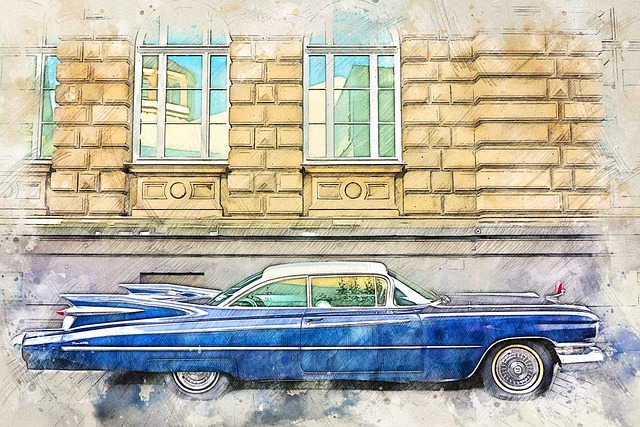TL;DR:
When shipping classic or vintage cars, conduct thorough inspections covering mechanical systems, exterior, tires, and interior. Assess vehicle history and maintain proper documentation (permits, registration, valuation) to avoid delays, legal issues, and insurance claim rejections. These steps ensure a seamless transportation process while preserving the car's integrity and value.
“Avoid costly mistakes with classic and vintage car shipping! This comprehensive guide sheds light on the hidden traps within vehicle shipping processes, from pre-shipment preparations to post-delivery issues. We explore common oversights like neglecting vehicle condition assessments and inadequate documentation, as well as transportation hazards such as incompatible container choices and inexperienced drivers. Learn how to ensure a seamless journey for your precious classics.”
- Pre-Shipping Preparations: Overlooking Essential Checks
- – Neglecting vehicle condition assessment
- – Inadequate documentation and paperwork
Pre-Shipping Preparations: Overlooking Essential Checks

When preparing a classic or vintage car for shipping, many owners overlook essential checks that can lead to significant issues down the line. A thorough inspection is crucial to ensure the vehicle’s condition during transit and to prevent costly repairs or losses. Start with a comprehensive review of the car’s mechanical systems—checking the engine, transmission, brakes, and electrical components for any signs of wear or damage. This step is vital as these systems are often unique and delicate, requiring specialized knowledge for maintenance.
Additionally, pay close attention to the exterior and interior of the vehicle. Inspect the paint job, looking for chips or cracks that might compromise the car’s structural integrity during transit. Check the tires for tread wear and ensure they meet the shipping company’s requirements. Interior components, such as seats, dashboards, and trim, should also be in good condition. Overlooking these details can result in damage, making pre-shipping preparations a critical step for shipping classic and vintage cars.
– Neglecting vehicle condition assessment

Many classic and vintage car owners make the mistake of overlooking the crucial step of assessing their vehicle’s condition before shipping. This can lead to unexpected issues during transit, causing potential damage or even rendering the vehicle unsellable upon arrival. A thorough inspection is essential to identify any pre-existing problems, such as structural weaknesses, mechanical failures, or cosmetic flaws, that could be exacerbated by the shipping process.
When shipping these precious vehicles, it’s vital to consider the history and maintenance records of the car. Neglecting this aspect may result in unforeseen challenges, including hidden repairs needed before or upon delivery. The goal is to ensure a smooth transportation process, preserving the classic car’s value and integrity for both the owner and the buyer.
– Inadequate documentation and paperwork

When it comes to shipping classic and vintage cars, proper documentation is paramount. Many owners overlook this critical aspect, leading to significant delays and potential legal issues. Inadequate paperwork can cause customs hold-ups, as officials require detailed records for any vehicle crossing borders. These documents not only verify ownership but also ensure the car’s historical authenticity, a crucial factor in the classic car shipping process.
Additionally, incorrect or missing forms may result in insurance claims being rejected if something goes amiss during transit. Therefore, it is essential to gather all necessary shipping permits, registration papers, and valuation estimates before initiating the vehicle shipment. Being thorough from the outset can save time, money, and avoid unnecessary stress for both the owner and the shipping company.
When shipping classic or vintage cars, careful planning and attention to detail are paramount to avoid costly mistakes. Pre-shipping preparations, including comprehensive vehicle condition assessments and meticulous documentation, are crucial steps that often get overlooked. By addressing these common errors, you can ensure a smooth and secure transport process for your cherished vehicles, allowing you to focus on the joy of preservation and appreciation rather than potential setbacks.
